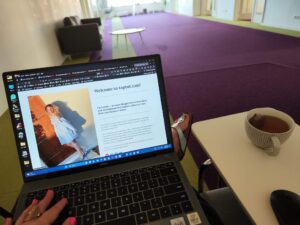We live in a world overflowing with information. Every day, we’re bombarded with data, from news and social media to emails and work documents. Our brains, however, aren’t built to handle this constant influx effectively. That’s where a personal knowledge management system (PKM) comes in handy.
A PKM system is more than just a way to organize files. It’s a structured approach to capturing, organizing, processing, and using information to support your thinking and goals. Think of it as an external hard drive for your brain, freeing up mental space for more important tasks. You might be interested in: How to declutter your bedroom.
The Limits of Traditional Note-Taking
Traditional note-taking, like using notebooks or scattered Word documents, often fails to help us manage knowledge effectively. These methods tend to focus on collecting information, not connecting it. This leads to information silos where valuable insights get lost. Plus, searching for specific info in a disorganized system can be a real headache.

PKM: A Solution for the Information Age
A well-designed PKM system solves these problems by providing a framework for connecting and synthesizing information. This helps you build a network of knowledge where ideas can combine and create new insights. Your PKM system becomes a powerful tool for learning, problem-solving, and creativity.
The Evolution of PKM: From Organizations to Individuals
The idea of personal knowledge management stemmed from organizational knowledge management. Formal recognition of PKM came about in 1999, marking a shift toward individual knowledge management. This evolved from traditional personal information management (PIM) and knowledge management (KM) practices. PKM combines ideas from cognitive psychology, management, and philosophy. It focuses on how we process and manage knowledge to boost productivity and learning. As technology has improved, PKM has adapted to include digital tools and web-based platforms like Notion and Evernote, making information gathering, organization, and use more efficient. By using PKM, we can effectively manage the huge amount of information available today. Learn more about PKM here.
This shift shows the growing recognition that knowledge is valuable not just for companies but also for individuals. By adopting PKM principles, you can control the flow of information and use it for personal and professional growth.
The Evolution of Knowledge Management: From Theory To Practice

Creating a solid personal knowledge management system (PKM) isn’t just about using the newest app. It’s about grasping the core principles that make certain approaches work better than others. This understanding comes from exploring the history of knowledge management, a journey that started not in personal notebooks, but in the corporate world.
The Rise of Knowledge as a Strategic Asset
The formalization of knowledge management began in corporations. In the early 1990s, theorists like Ikujiro Nonaka and Hirotaka Takeuchi highlighted knowledge’s vital role in driving innovation and organizational success. Their influential book, The Knowledge-Creating Company, emphasized the importance of knowledge as a strategic asset.
By the mid-1990s, this spurred a wave of investment in corporate knowledge management initiatives. Businesses began actively managing and using their collective knowledge. They recognized its power to fuel growth and competitive advantage. Want to learn more? Explore the topic of Knowledge Management.
From Corporate To Personal: The Birth of PKM
This corporate focus on knowledge laid the groundwork for personal knowledge management (PKM). As individuals faced increasing information overload, the need for a structured approach to managing personal knowledge became clear. The term “personal knowledge management” was formally introduced in 1999, marking a shift towards empowering individuals with their own intellectual resources.
The Influence of Pioneering Thinkers
This evolution wasn’t a simple transfer of corporate practices to individuals. Key thinkers adapted and refined these concepts for the unique challenges of personal knowledge work. For example, Getting Things Done (GTD) emerged, emphasizing capturing and organizing tasks and ideas to free up mental space.
Later, thinkers like Tiago Forte expanded on these ideas with concepts like Building a Second Brain, which focuses on connecting and synthesizing information to generate new insights. Also worth a read: How to Measure Team Productivity Effectively.
This historical perspective is vital for building a truly effective PKM system. It’s not just about storing information. It’s about using knowledge management principles to boost your thinking, creativity, and productivity. Understanding the foundations helps you build a PKM system that powers learning and growth.
The Four Pillars of Powerful Personal Knowledge Systems

What makes a truly effective personal knowledge management system? What separates it from a chaotic mess of digital files? The answer lies in four core processes: capturing, organizing, processing, and applying. These four pillars work in concert to transform raw information into usable knowledge.
Capturing: Gathering Intelligently
Capturing, the first pillar, is about strategically collecting information. It’s not about saving every single thing you see. Instead, it’s about choosing what’s truly valuable and relevant to your goals. Think of it like a curator selecting pieces for an exhibit. Useful capturing strategies include browser extensions for saving articles, bookmarking important websites, and using note-taking apps like Evernote during meetings.
Organizing: Structuring for Your Brain
Once you’ve gathered information, you need to organize it. This means structuring it in a way that makes sense to you. This is where many systems fail. Some people prefer visual organization with tools like XMind for mind mapping. Others prefer a more traditional, linear approach with a tool like Notion. The key is finding a system that lets you easily connect and retrieve information when needed.
Processing: Distilling Raw Data
Processing, the third pillar, is about refining raw information into actionable insights. This might involve summarizing key takeaways from articles, pulling out core concepts from books, or combining information from various sources. This is where data becomes knowledge. A structured approach is crucial here. Digital note-taking tools, organized bookmarks, and even a personal library or database can help. These systems can streamline your workflow, improve decision-making, and boost problem-solving skills. Frand and Hixson emphasize creating a mental map of your knowledge and using technology for synthesis and idea processing. Learn more about their research here.
Let’s take a closer look at how these four essential processes compare:
Core PKM Processes Comparison
This table compares the four essential processes in personal knowledge management systems and their implementation approaches.
| Process | Purpose | Common Methods | Digital Tools | Challenges |
|---|---|---|---|---|
| Capturing | Gather relevant information efficiently | Bookmarking, note-taking, web clipping | Evernote, browser extensions, Raindrop.io | Information overload, distractions, inconsistent capturing habits |
| Organizing | Structure information for easy retrieval | Tagging, folders, mind maps, linking notes | Notion, XMind, file systems | Finding a suitable system, maintaining consistency, adapting to evolving needs |
| Processing | Distill raw data into actionable insights | Summarizing, highlighting, synthesizing, reflecting | Obsidian, Roam Research, note-taking apps | Time commitment, cognitive effort, maintaining focus |
| Applying | Use knowledge to solve problems and generate new ideas | Project integration, decision-making, content creation, skill development | Project management software, writing tools, presentation software | Actively integrating knowledge into workflow, overcoming inertia |
This table highlights the interconnectedness of the PKM processes. Each step builds upon the previous one, culminating in the application of knowledge. The challenges listed emphasize the importance of developing consistent habits and adapting your system as your needs change.
Applying: Putting Knowledge to Work
The final pillar, applying, is where your PKM system truly shines. This is where you actively use your knowledge to solve problems, make decisions, and create new ideas. This might mean looking back at your notes while working on a project, using a learned framework for a new challenge, or creating new content based on your insights. This active use of knowledge solidifies learning and makes your PKM a dynamic tool for growth. A helpful resource for applying your knowledge is the Goal Setting Framework.
Choosing Your Perfect PKM Tools (Without Getting Stuck)

The world of personal knowledge management (PKM) tools can be a bit daunting. So many apps and platforms are available, each promising to be the one that will transform your workflow. But how can you possibly know which is the right one for you? This section will guide you through the process of finding the perfect PKM tool to meet your individual needs.
Beyond Flashy Features: What Truly Matters
It’s tempting to be swayed by the latest bells and whistles, by sleek interfaces and promises of effortless organization. But the truth is, the best PKM tools are the ones that actually help you think better. They should integrate seamlessly into your existing workflow, becoming almost an extension of your mind, rather than just another app destined to be forgotten.
Matching Tools to Your Thinking Style
Everyone thinks differently. Some people are visual thinkers, thriving with mind maps and diagrams. Others prefer the structure and flexibility of text-based systems. The 2022 Personal Knowledge Management Report by Scrintal surveyed over 5,000 people and found that 70% use knowledge management tools to publish their work. This highlights a growing trend of knowledge sharing. The report also noted the rise in popularity of tools like Notion, emphasizing the importance of a user-friendly interface.
Understanding PKM Methodologies: Zettelkasten, PARA, and Second Brain
Several well-established PKM methodologies can help guide your tool selection. Zettelkasten, a system of interconnected notes, is designed for deep thinking and generating new ideas. The PARA method (Projects, Areas, Resources, Archives) offers a framework for organizing your digital information. The Second Brain approach focuses on capturing, organizing, and actively using your knowledge to create and share. Understanding these different methodologies can help you choose a tool that aligns with your preferred way of working.
Evaluating Leading PKM Platforms
To help you get started, let’s compare some of the most popular PKM tools, looking at their strengths and weaknesses:
Here’s a quick comparison table to get you started:
Top PKM Tools Comparison Comparison of leading personal knowledge management tools based on key features and use cases
| Tool | Best For | Key Features | Learning Curve | Price | Integration Capabilities |
|---|---|---|---|---|---|
| Notion | Versatile PKM and project management | Databases, Kanban boards, wikis, note-taking | Moderate | Free and paid plans | Extensive API and integrations |
| Obsidian | Zettelkasten and networked thinking | Markdown support, graph view, extensive plugins | Moderate | Free and paid plans | Growing ecosystem of plugins |
| Roam Research | Networked thought and knowledge graphs | Bi-directional linking, block references, powerful search | Steep | Paid only | Limited integrations |
| Evernote | Note-taking and web clipping | Cross-platform syncing, tagging, audio notes | Easy | Free and paid plans | Integrations with other productivity apps |
This table is just a starting point. When making your final decision, consider your specific needs and preferences. Don’t be afraid to experiment with a few different tools to see what feels right.
Avoiding Tool Paralysis: Start Simple and Iterate
The most important thing is to avoid getting bogged down by tool paralysis. Don’t try to find the “perfect” tool right away. Begin with a simple system that works for you now. As your needs change and grow, you can refine your system and explore other tools. The goal is to create a sustainable PKM system that supports your thinking and helps you achieve your goals.
Building Your Personal Knowledge System That Actually Sticks
Most knowledge systems fail within weeks—but yours doesn’t have to! This section will guide you through creating a sustainable personal knowledge management (PKM) workflow. This system will work with your unique thinking style and professional needs, setting you up for success in the long run.
Capture: Seamlessly Integrating Knowledge Gathering
Effective capturing means smoothly integrating knowledge gathering into your daily routine. Instead of disrupting your flow, your PKM system should make things easier.
For example, try using browser extensions like Evernote Web Clipper or Save to Pocket to quickly save articles or bookmark important websites during research. This way, you don’t have to interrupt your train of thought to open a separate app. Also, set aside a specific time each day, maybe at the end, to quickly review and organize any captured information. This prevents a backlog and keeps your system current.
Organize: Structuring Information for Your Brain
A successful PKM system relies on organizing information in a way that makes sense to you. Think of it like organizing your physical workspace. Some people thrive in minimalist environments, while others prefer a bit of organized chaos. It’s the same with PKM systems. Some people like visual tools like XMind (mind maps), while others prefer text-based systems with lots of tags. The key is to experiment and find what works best for you. This personalized approach is essential for long-term use. Check out our guide on How to Avoid Procrastination to develop consistent PKM habits.
Process: Transforming Information Into Actionable Insights
Processing is where you refine raw information into usable knowledge. This could involve summarizing key takeaways from articles, connecting different ideas, or thinking about how the information applies to your current projects. Imagine a chef transforming raw ingredients into a delicious meal. It’s more than just collecting; it requires actively working with the material. Try rephrasing key concepts in your own words, or consider how you can apply a specific insight to your work. This active engagement reinforces your learning and makes the information truly yours.
Retrieval: Finding Information When You Need It
A well-designed PKM system helps you find information exactly when you need it. This means using smart tagging, linking, and indexing strategies. Think about the difference between looking for a document in a cluttered office versus a well-organized filing cabinet. A strong retrieval system in your PKM saves you time and energy. This allows you to focus on using your knowledge, not searching for it. Efficient retrieval reinforces the value of your PKM and encourages you to use it consistently.
From Intention to Habit: The Psychology of Sticking With It
Turning your PKM from a fleeting idea into a lasting habit means understanding habit formation. Start small and build one habit at a time. For example, spend just five minutes each day capturing information. Once that becomes automatic, add another small habit, like reviewing your notes weekly. This gradual approach is more sustainable than trying to change everything at once. Small wins build momentum and increase your chances of long-term success. By building on these small successes, you’ll create a strong and sustainable PKM system that helps you learn, grow, and achieve your goals.
Overcoming the Seven Deadly PKM Pitfalls
A personal knowledge management (PKM) system can be incredibly powerful. But even the best-designed systems can stumble into common traps. This section explores those obstacles and offers practical solutions to help you build a truly effective and long-lasting PKM.
The Collector’s Fallacy
One of the most frequent pitfalls is the collector’s fallacy: gathering tons of information without ever actually using it. This leads to a digital mountain of articles, notes, and bookmarks that never see the light of day. The solution? Be picky about what you save. Ask yourself: “How will I use this?” If you can’t answer, it’s probably not worth keeping.
Tool Paralysis
Another common trap is tool paralysis. With so many PKM apps and platforms like Notion or Obsidian available, it’s easy to get bogged down comparing features instead of actually using them. Start simple, maybe with a basic note-taking app and folders. You can always upgrade later.
The Consistency Barrier
Building a PKM is a marathon, not a sprint. Consistency is essential, but motivation can fade. To stay on track, make your PKM part of your daily routine. Schedule short blocks of time for capturing and processing information – even just 15 minutes a day can add up. Check out our guide on Mental Clarity Exercises for tips on staying focused and building sustainable habits.
Siloed Knowledge
Knowledge silos happen when information gets trapped in isolated pockets, making it hard to see connections and generate new ideas. To avoid this, use tags, links, and backlinks to connect related information. Think of your PKM as a network of ideas, not just a storage space.
The Perfectionism Trap
Wanting a perfect PKM system can be paralyzing. Don’t let perfect be the enemy of good. Start with a basic system and refine it over time as you figure out what works for you. PKM is an ongoing process.
Fear of Failure
Some people hesitate to start a PKM because they’re afraid of messing up. Remember, building a PKM is a learning experience. There’s no single right way. Experiment, adapt, and don’t be afraid to make mistakes.
Neglecting Review and Reflection
Regularly reviewing and reflecting on your PKM is vital. Set aside time each week or month to go through your notes, get rid of anything irrelevant, and strengthen connections between ideas. This keeps your system dynamic and helpful.
Building a successful PKM means overcoming these common challenges. When being aware of these pitfalls and using the strategies here, you can create a powerful tool for learning, growing, and reaching your goals. Ready to boost your productivity? Visit Lorelei Web for more resources on business management, productivity, and content marketing.

Lorelei has been an online entrepreneur, marketer and writer since 2006. Her biggest passion is WordPress, which is why she switched to being a full-time blogger 20 years ago and hasn’t looked back since. With so many years of experience behind her, she is an expert in copywriting, SEO, marketing and business strategies.






